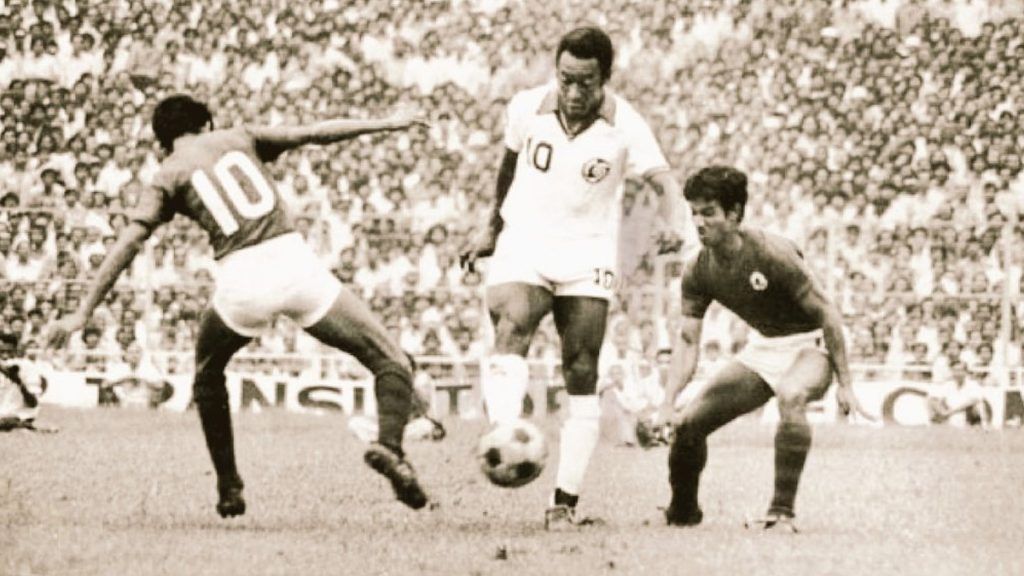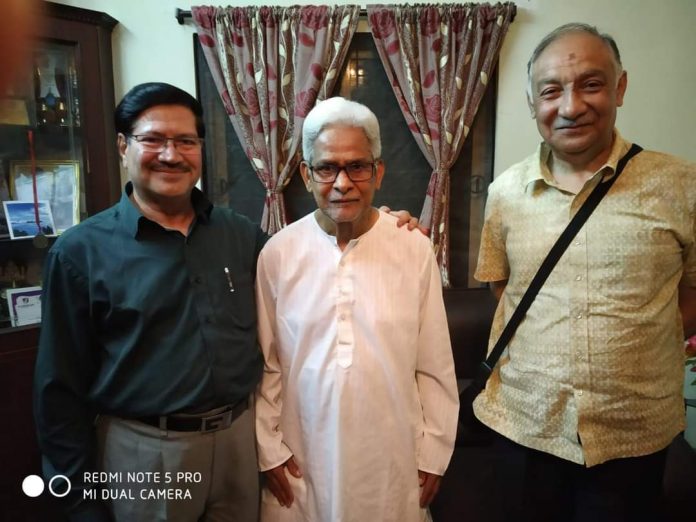By Firoz Bakht Ahmed*
NEW DELHI—The lovers of football have seen a time when the very mention of Habib’s name makes his rivals nervous. In the comity of Indian footballers, few could match this diminutive Hyderabadi’s ferocious approach and killing spirit to the game. He was small in size but what he lacked in height and weight, he made up as a scorer squirming amongst the jungle of legs in the penalty box! PK Bannerjee, the coach of the Indian football team, stamped him as the best scorer, stating that he was a fighter on the field and never gave up till the last whistle. The greatest moment of his life was when he donned the colours of Mohun Bagan on September 24, 1977, to play against Pele to give him a run for his money while he represented New York Cosmos team, having legendary names like Carlos Alberto, Mauro Ramos, Pepe, Gerson, Garrincha, Jarzinho, Rivelino, and Giorgio Chinaglia besides others.
A football enthusiast, I was witness to Mohammed Habib’s wily goal for Mohammedan Sporting FC against Bank of Seoul of South Korea in the DCM Football Cup final in 1980 at the Corporation Stadium (now Ambedkar Stadium), Delhi. Amidst a jungle of legs in the penalty box, he scored with waist bending and dodging three defenders, he thumped the left footer on the left side of the goalie. How the 20,000-odd crowd hailed the historic victory, is all history today.
The legendary footballer died on August 15. Baichung Bhutia, former Indian football team captain, with eyes welled up in tears, said, “My ideal and the soccer magician is gone!”
Mohammed Habib, the playmaker par excellence of the 1960s, 70s and early 80s, who scored against Pele’s New York Cosmos in Mohun Bagan colours and made the football icon take note of his game, will be remembered as a cunning and clever forward. His goals were only seen after he netted the ball to the ghastly surprise of the goalie and confused defenders. For Andhra, in 1965, he won the Santosh Trophy against Bengal, the most formidable team those days. Subsequently in the 1969 Santosh Trophy, he scored five goals in Bengal’s 6-1 win over Services, which still stands as a record, unbroken.

Atyab Siddiqui, a connoisseur of Indian football, states in his book, “The School at Ajmeri Gate”, “The legend that was Mohammed Habib, was never born to lose! In the seven seasons he played for East Bengal, Mohammed Habib scored the winning goals in three Durand Cup finals. Habib scored unimaginable goals. A true professional, “Bade Miyan” – as he was fondly remembered – was the best Indian forward of his times. A slick forward, and an Arjuna awardee, he was a sure bet for the winning teams whether it was the Ambedkar Stadium in Delhi, the Cooperage in Mumbai, or the famed Maidans of Kolkata. Today, Habib survives in the memories of his fans – fortunate that he did not die unsung!
A couple of years ago, when the author, along with his friend, Atyab, had met Habib at his residence in Hyderabad, though suffering from Parkinson’s disease and dementia, he still appeared dignified and his wife requested us to speak to the then Sports Minister, Vijay Goel, for arranging an exhibition match for him where he is a hero. The author contacted the minister, who referred him to his secretary who was given all the details of Habib. Nothing was done. Even the Arjuna Award stipend was discontinued. What is most lamenting, is that except for cricket, most other games occupy a backseat.
Incidentally, Habib has three daughters and no son to carry on his football legacy. However, Harisa, his daughter, tells that her son is proud of his maternal grandfather’s gaming expertise and plays football. She said that it’s good that money is rolling in football in the form of ISL championships but the authorities must ponder over sparing a certain percentage of the earnings for the welfare of old players, who are facing hard times. Incidentally, Akbar, the younger brother of Habib, another great forward, is planning to begin a football academy in the name of Habib.
At Habib’s feet, the ball seemed to obey his command like a pet. Undoubtedly, he played with a kind of brilliant camouflage, seeming to be somnolent for long stretches before asserting himself at urgent moments with a mesmerizing dribble, astounding pass or stabbing shot. Though he was short and puny, his spinning shots carried immense power.
In 1970, when Habib played a notable part in the bronze medal-winning dream run in the Asian Games in Bangkok, Thailand, he etched his name in the folklore of Indian Football as the best forward. Besides, he was a perfect schemer and could imagine the moves in his mind like a game of the chessboard. It was owing to his unassailable efforts that India became the joint winner of the Pesta Sukan Cup with South Vietnam in 1971.
On the internal front, while Habib played for Andhra, he even helped defeat Bengal in the Santosh trophy. He switched over from Hyderabad to Kolkata in 1966 when he joined East Bengal. He holds a unique record for playing for all the big three, that is, East Bengal, Mohun Bagan and Mohammedan Sporting for the longest duration in totality. The way he had been scoring goals, he became a living legend. His grit, determination and never-say-die attitude on the field inspired his contemporaries as well as generations of footballers. He was a man not given to temptations as he refused the ads and devoted his time to the game, yet, he was recognized as a professional footballer.
Habib not only scored a goal in the historic exhibition match against New York Cosmos 2-2 but caught the attention of King Pele for his speedy change in positions to dodge the opponents and defy man-to-man marking at the Eden Garden that evening. Habib was one of the few players to win the Triple Crown (winning the IFA Shield, Durand Cup and Rovers Cup in the same season) for both East Bengal and Mohun Bagan in 1972 and 1977, respectively. Habib became a successful coach once he decided to hang up his famous number 10 jersey in 1982.
Having joined as the coach at Tata Football Academy in Jamshedpur, he was instrumental in producing a number of footballers, who went on to don the National Team colours. Later, he coached Mohun Bagan and Mohammedan Sporting, too. Habib won the Santosh Trophy on five occasions – 1965 (with Andhra Pradesh), 1969, 1971, 1972, and 1975 (with Bengal).
Habib also has the distinction of winning the Calcutta Football League 10 times (1966, 1969, 1970, 1971, 1972, 1973, 1974, 1976, 1978, 1982), the Durand Cup five times (1967, 1970, 1972, 1977, 1982), the Rovers Cup seven times (1967, 1968, 1972, 1973, 1976, 1977, 1981), the IFA Shield four times (1970, 1972, 1973, 1974), and the Federation Cup twice (1978 and 1981) with clubs like East Bengal, Mohammedan Sporting and Mohun Bagan.
Awards and rewards were bedecked upon Habib, with the Arjuna Award in 1980, the East Bengal “Bharat Gaurav Award” in 2015, and the prestigious “Banga Bibhushan” award in 2018, bestowed upon him by the Government of West Bengal. After his coaching stints, India, with renowned soccer players like Baichung Bhutia, Sunil Chhetri and many more, surely, will get a kiss of life and surge ahead like her world class cricketers!
The kind of dribbling magician that Habib was, his contributions to Indian football are endless, serving as the ideals for the football fraternity and posterity. The football legacy, shaped by his performances as a scorer, coaching acumen, and dedication to the sport, will continue to inspire generations of football enthusiasts. As the nation mourns his demise, his memory will live on through the stories and achievements that have left an indelible imprint on the fabric of Indian football history.
(Firoz Bakht Ahmed is the former chancellor of MANUU, Hyderabad, and can be contacted at [email protected])





